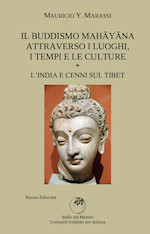The meaning of takuhatsu
While practicing zazen and studying Dharma in a monastery, one can feel that he or she is doing something more meaningful than the people working in the marketplace are. At least, I had such a tendency. When I was a teenager, I didn’t want to live as many Japanese people do. To me, it seemed that Japanese society was one big moneymaking machine and that people were forced to be a part of the machine. I couldn’t find any meaning to living that way. I wanted to escape from such a way of life. That was one of the reasons I became a Buddhist monk. Because of this, I sometimes looked down on people who worked primarily to make money. I felt that my way of life had a higher meaning than that of the people who were satisfied with these standards. In doing takuhatsu, I was forced to realize that those people supported my practice. I could not, and should not, look down on anyone. Actually, Shakyamuni Buddha taught us to help such people. If I simply escaped from a busy, noisy, stressful, materialistic society, and despised people in the society even though those people support my practice, my way of life would be completely contrary to the Buddha’s way.
Between two poles
One interesting aspect of takuhatsu as a Buddhist practice is the idea of two poles, which I commented on above. In the case of takuhatsu, we could not request that people make offerings. We could not predict how much we would receive. And we knew we should not do takuhatsu for the sake of money. We should not attach ourselves to the result. We received only the amount people offered. What we received was completely dependent upon the people who gave, not upon our efforts. Still, if we did takuhatsu for a long time in the same area, we could tell how much we could expect from a certain district. And if we supported our practice by takuhatsu, we’d have to calculate how much money we needed each month. We would try to get the amount of money we needed as efficiently as possible or else we wouldn’t have time to practice.
So, there are two almost contradictory principles: one should not calculate and simply receive what one is given; or, one should calculate and make money as efficiently as possible. This contradiction is like the contradiction between discrimination and non-discrimination or between thinking and not thinking. Takuhatsu is a practice, a koan that each person actually faces in his or her very concrete daily activity.
Conclusion
I am writing to you about Dogen Zenji’s attitudes toward kanjin (fund raising activity) and my experience of takuhatsu in order to offer some information about the Buddhist ideas of fundraising to American practitioners who are interested in helping fundraising activities for Sanshin Zen Community. If Sanshin Zen Community practitioners and friends conduct fundraising, I hope it is done as a Buddhist practice with a genuine Bodhisattva spirit. This means, as I wrote in my letter to you [ed: i.e., the letter contained in the Greetings article above], to do fundraising without defilement of the three poisonous minds and, also, to use this activity as a chance to nurture the sanshin (magnanimous mind, joyful mind, and tender mind). In order to do this, each person needs to examine his or her attitude toward practice and his or her own life.
I hope this information is helpful for everyone. If anyone has comments or questions on this, please feel free to send them to me. [See contact information at the end of the preceding section of the newsletter]. In addition, it would be very nice if we had a chance to initiate an open discussion during a sesshin or another activity that we share together.
Sesshin without toys
Many have enjoyed Uchiyama Roshi’s expression, “Sesshin without Toys.” This saying was part of the focus of Shohaku Okumura’s lectures during a sesshin in Minneapolis this past January. In the Lotus Sutra, a parable points out our fascination with the three poisonous minds, greed, anger-hatred, and ignorance, despite the suffering brought by them. The parable tells of children so entranced by their toys that they ignore their father’s pleas to leave their burning house. Uchiyama Roshi devised a sesshin schedule that includes an early morning wake-up and 14 periods of zazen daily because he believed it was a skillful means to enable bodhi mind, that is, the Dharma, to replace the causes of suffering or samsara. Unlike other sesshins held at his temple, Antaji, these monthly sesshins did not include lectures, dokusan, work periods or chanting.
| « Takuhatsu by myself |
(Back to Summary) » |
Se volete, lasciate un commento.
You must be logged in to post a comment.







